During the days that Yeshua spent on this earth, there were three major sects of Judaism: the Pharisees, the Sadducees, and the Essenes. These three sects were joined together by God’s Word and national identity but they were divided in how they interpreted God’s Word and lived out their faith.
The Pharisees believed in the Torah but they also held strongly to the oral tradition as having equal authority to the written Word of God. The Sadducees held to a more literal interpretation of the Torah and rejected the oral tradition. The Essenes separated themselves from both of these groups by living separately in the desert and holding to God’s Word in a more practical manner by living in community and emphasized the spiritual life above the politics of the Pharisees and Sadducees.
The Essenes
Since the Essenes lived as a separate community in the desert we don’t read about them in the New Testament, in contrast to the Pharisees and Sadducees who were constantly engaged with Yeshua and his disciples. Some believe that John the Baptist identified with the Essenes since he lived in the desert region (Luke 1:80), however, this is just speculation.
It was the Pharisees and Sadducees who made up the political body of the Jewish people during the times of the Roman rule in Judea and Samaria. The Sadducees occupied the positions of the priests and were considered the elite of their day, whereas, the Pharisees occupied positions of the common man and were more influential with the average Jewish person.
The Pharisees
The name Pharisee comes from the Hebrew word “פרוש” – “parosh” and means “separated” or “divided.” More than likely, the name Pharisee was not meant to be a negative term in the sense of rebels, but rather a spiritual term that expressed their desire to be a separate people unto God (Deut. 7:6). The lifestyle of the Pharisees was carefully monitored by the Oral Law, which provided the details of how to live out the written Law of God, the Torah.
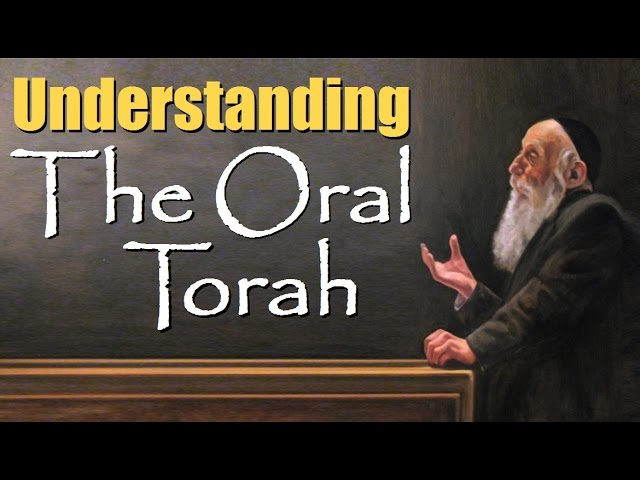
The Sadducees
The name Sadducees comes from one of two derivatives. The first possibility is that the name Sadducees comes from the name “Zadok,” which in Hebrew is “צדוק” – “Tzadok” and means “righteous.” This is taken from the promise in the Scriptures that it would be the sons of Zadok that would continue to serve as priests of God (Ezek. 48:11). Therefore, those who were the sons of Zadok would be called “צדוקים” – “Tzadukim” – “The righteous ones” or “those of Zadok.”
The other possible derivative is closely related to the name Zadok and is simply the word for a righteous person; “צדיק” – “Tzadik” – “righteous (one).” The plural form of this word would be “צדיקים” – “Tzadikim.” These two derivatives are nearly identical and help us to understand why it was the Sadducees who served as priests in the Temple and enjoyed their high position as “the righteous ones.”

The Pharisees and Sadducees United
The Sanhedrin, which was the Jewish ruling council, had seventy seats which were filled by both Sadducees and Pharisees. The majority of the seats of the Sanhedrin were filled by Sadducees with a minority filled by the Pharisees, however, because the Pharisees had the majority of the Jewish population under their influence, the Pharisees often swayed the decisions in the Sanhedrin.
Even though the Sadducees and Pharisees were diametrically opposed to each other regarding their belief system within Judaism, they were forced to work together for the common good of the Jewish people. One person that united these two factitious groups was the person of Yeshua:
Therefore the chief priests and the Pharisees convened a council, and were saying, “What are we doing? For this man is performing many signs. If we let Him go on like this, all men will believe in Him, and the Romans will come and take away both our place and our nation.” But one of them, Caiaphas, who was high priest that year, said to them, “You know nothing at all, nor do you take into account that it is expedient for you that one man die for the people, and that the whole nation not perish.” Now he did not say this on his own initiative, but being high priest that year, he prophesied that Yeshua was going to die for the nation, and not for the nation only, but in order that He might also gather together into one the children of God who are scattered abroad. So from that day on they planned together to kill Him. – John 11:47-53
The miracles that Yeshua performed and His teaching drew the people from every city and village in Israel. The move of the people toward Yeshua brought the Jewish leaders together as they saw Yeshua as a threat and, as a result, they planned to kill Him.
In the above scenario, we read about the chief priests and the Pharisees. The chief priests would be from the group of the Sadducees. Therefore when we read about the chief priests and the Pharisees working together we are actually reading about the Sadducees and Pharisees working together. We also see the connection between the priests and the Sadducees explained in context in the book of Acts: “But the high priest rose up, along with all his associates (that is the sect of the Sadducees), and they were filled with jealousy.” (Acts 5:17) The priests and those associated with the priests were generally from the sect of the Sadducees.

Divided on The Resurrection
As mentioned earlier, the Pharisees and the Sadducees came from two polar opposite perspectives regarding the Torah; the Sadducees held to a very literal perspective of the Torah while the Pharisees equated oral tradition with the Torah, which allowed for much wider interpretation. Since resurrection and the afterlife are never mentioned in the Torah, the Sadducees believed that there was no resurrection, whereas, the Pharisees believed in the resurrection.
Yeshua Himself dealt with the Sadducees in regard to the subject of the resurrection through a question that they asked Him about involving a woman who had had many husbands, whom had all died. The Sadducees asked Yeshua which one of the men would be her husband in the resurrection. Yeshua confronted a misunderstanding that the Sadducees had regarding the way of life in the resurrection and thereby silenced His critics (Matt. 22:23-34).
The Apostle Paul also used the division between the Pharisees and Sadducees regarding the resurrection to rescue himself from their hands by turning them against one another:
But perceiving that one group were Sadducees and the other Pharisees, Paul began crying out in the Council, “Brethren, I am a Pharisee, a son of Pharisees; I am on trial for the hope and resurrection of the dead!” As he said this, there occurred a dissension between the Pharisees and Sadducees, and the assembly was divided. For the Sadducees say that there is no resurrection, nor an angel, nor a spirit, but the Pharisees acknowledge them all. – Acts 23:6-8
Paul was raised and trained as a Pharisee, therefore, he knew well the belief system of these two sects of Judaism. The Pharisees believed strongly in the resurrection of the dead, whereas, the Sadducees declared that there was no such thing as the resurrection.
The Significance of the Omer
Another major point of theological contention between the Pharisees and Sadducees is found in this week’s text of the Torah Portion. In Leviticus 23 the LORD gave Moses an overview of the Sabbath and of all of the appointed times of the LORD which were to be kept throughout the year. After the Sabbath, the next appointed time of the LORD is the Passover, which is tied to the Feast of Unleavened Bread and is celebrated for seven days (Lev. 23:4-8).
After the Passover, most people think that the next appointed time of the LORD is “חג השבועות” – “Chag HaShavuot” – “The Feast of Weeks” or in English (via Greek) “Pentecost.” Commonly overlooked, and sadly neglected in most of our lists of appointed times of the LORD, is the marking of the “first fruits:”
Then the LORD spoke to Moses, saying, “Speak to the sons of Israel and say to them, ‘When you enter the land which I am going to give to you and reap its harvest, then you shall bring in the sheaf of the first fruits of your harvest to the priest. He shall wave the sheaf before the LORD for you to be accepted; on the day after the sabbath the priest shall wave it.’…” – Lev. 23:9-11
This wave offering of the first fruits consisted of an “עומר” – “omer” which is translated as “sheaf” in the above verses and constituted a dry measure for a grain offering. This grain offering was commanded to be offered on the day after the Sabbath of Passover week. It is on this very issue of the day of the offering of the first fruits that the Pharisees and Sadducees differed in their understanding of the text.

When is the Sabbath of Passover?
The Sadducees, who take the literal meaning of the text, believed that the day of first fruits was to be observed on the first day of the week following Passover; meaning the day after the regular Sabbath day (Saturday) of Passover week. This would mean that the first fruits would always be observed on the Sunday following the first day of Passover. The Pharisees, on the other hand, believed that the “Sabbath day” that is referred to in Leviticus 23:11 was the first day of Passover, as the first and seventh days of Passover week were considered Sabbath days, days of rest. The position of the Pharisees was in accordance with the Oral Law. Therefore, the Pharisees and Sadducees disagreed on what was meant by the phrase “the day after the Sabbath.” Is it referring to the regular weekly Sabbath day during Passover week or the first day of Passover which was counted as a Sabbath day, a day of rest?
What is the Big Deal Regarding the Day?
The wave offering of the first fruits was one of the days that the LORD commanded to be observed in His list of appointed times. Beyond this, the day that the first fruits was observed was to be the basis of dating the next appointed time, which is The Feast of Weeks or Pentecost:
You shall also count for yourselves from the day after the sabbath, from the day when you brought in the sheaf of the wave offering; there shall be seven complete sabbaths. You shall count fifty days to the day after the seventh sabbath; then you shall present a new grain offering to the LORD. – Lev. 23:15-16
Seven full weeks were to be counted from the day of the first fruits culminating on the fiftieth day, which would be the day of the new grain offering, the Feast of Weeks.
The Sadducees took these verses literally and believed that the first fruits was to be observed on the Sunday during the week of Passover and thereby the observation of the Feast of Weeks would be observed 50 days later on a Sunday as well, whereas, the Pharisees believed that the first fruits was to be observed on the day after the first day of Passover, whichever day this would fall on, and that the Feast of Weeks would be observed fifty days later, whichever day this would be. The common practice in Judaism today observes the position of the Pharisees, in agreement with the Oral Law. Is this the correct understanding of God’s Word?
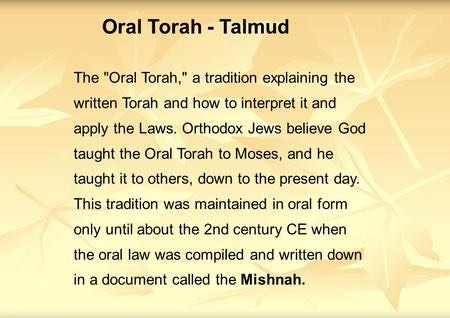
This dispute regarding the exact day of the observation of the first fruits and how to count the days leading up to the observation of the new grain offering and the Feast of Weeks was so divisive between the Sadducees and Pharisees that it created a sort of internal theological war. Rabbi Israel Meir Lau explains the controversy in his book titled Practical Judaism:
In order to show that the Sadducees had misinterpreted the verses of the Torah, the cutting and bringing of the Omer (the sheaf of grain for the first fruits)* was performed in a massive public display. If…the first day of Passover was a Friday, the Omer was still cut on the Sabbath, to ensure refuting the Sadducee’s claims. – Modan Pub. Tel Aviv. 1997. p. 320 * italics added for clarification
Rabbi Lau has explained, in these couple of sentences, that the Pharisees did everything in their power to not credit the Sadducees with being right about the dating of the first fruits to such an extent that even if the observation of the first fruits fell on a Sabbath day (Saturday), they would break the law by cutting the first fruits of grain on the Sabbath and bring it to the priests in order to emphasize that the first fruits was not to be observed on a Sunday.
Who Was Right: The Pharisees or The Sadducees?
In evaluating the text in Leviticus 23, I believe there is really only one way that these verses can be properly interpreted and that is in observing the first fruits on the first day of the week, Sunday, the day after the Sabbath of Passover. The proof text for this is that seven weeks later, in regard to the counting of weeks for The Feast of Weeks, the day of the Feast of Weeks was also counted from the day after the Sabbath day:
You shall also count for yourselves from the day after the sabbath, from the day when you brought in the sheaf of the wave offering; there shall be seven complete sabbaths. You shall count fifty days to the day after the seventh sabbath; then you shall present a new grain offering to the LORD. – Lev. 23:15-16
The Pharisees could rightly consider the first day of Passover as a Sabbath day (meaning a day of rest), however, seven weeks later would not necessarily be a Sabbath day as Passover falls on different days of the week each year, however, there is always a regular Sabbath day during Passover week. Therefore, the Pharisaical position is not consistent with the text, whereas, the position of the Sadducees is consistent with the words of Scripture. The observation of the first fruits and The Feast of Weeks would always fall on the day after a regular Sabbath day, the first day of the week, a Sunday.
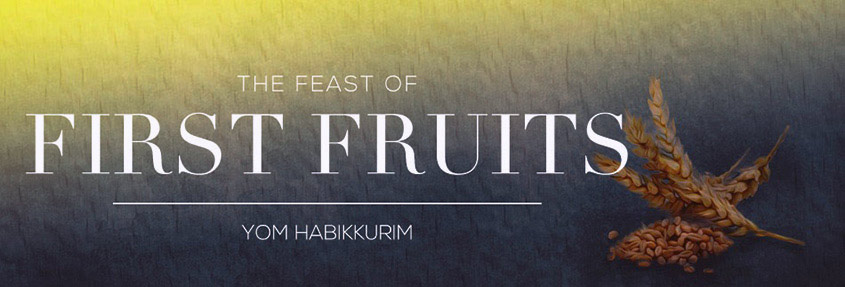
The Fulfillment of the First Fruits
The Sadducees got this one right. They were staunch adherers to a strict interpretation of the text and believed that the observation of the first fruits and the observation of the Feast of Weeks were both to be observed on Sunday, the first day of the week. It is ironic that the Sadducees, who do not believe in the resurrection from the dead, properly observed the appointed time of the LORD which would point to the resurrection of Yeshua.
It was no coincidence that Yeshua rose from the dead on the first day of the week. The New Testament specifically documents the day of Yeshua’s resurrection:
Now after the Sabbath, as it began to dawn toward the first day of the week, Mary Magdalene and the other Mary came to look at the grave. And behold, a severe earthquake had occurred, for an angel of the Lord descended from heaven and came and rolled away the stone and sat upon it. And his appearance was like lightning, and his clothing as white as snow. The guards shook for fear of him and became like dead men. The angel said to the women, “Do not be afraid; for I know that you are looking for Yeshua who has been crucified. He is not here, for He has risen, just as He said. Come, see the place where He was lying. Go quickly and tell His disciples that He has risen from the dead; and behold, He is going ahead of you into Galilee, there you will see Him; behold, I have told you.” – Matt. 28:1-7
Just as Yeshua was the fulfillment of the Passover lamb and was crucified on the day of Passover, so He was the fulfillment of the offering of the first fruits and was raised to life on the first day of the week of Passover (1 Corinthians 15:20). To discover more about the sequencing of events of Yeshua’s death and resurrection, I recommend the following article and video: Three Days – Three Nights
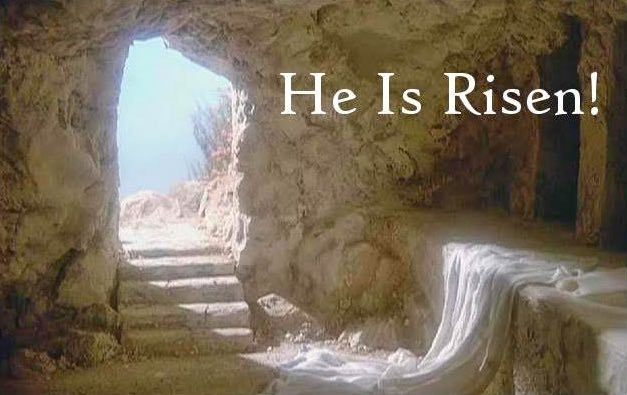
The Fulfillment of God’s Word
Since we know that Yeshua fulfilled the appointed time of the first fruits on a Sunday, we know that fifty days later was also a Sunday, The Feast of Weeks (Pentecost), the day when the believers were filled with the Holy Spirit in the upper room:
When the day of Pentecost had come, they were all together in one place. And suddenly there came from heaven a noise like a violent rushing wind, and it filled the whole house where they were sitting. And there appeared to them tongues as of fire distributing themselves, and they rested on each one of them. And they were all filled with the Holy Spirit and began to speak with other tongues, as the Spirit was giving them utterance. – Acts 2:1-4
God’s Word was perfectly and beautifully fulfilled through the life of Yeshua and His disciples. The LORD beautifully displayed the evidence of the filling of the believers with His Holy Spirit by miraculous signs and wonders on His appointed time of Pentecost, The Feast of Weeks.
The biggest skeptics of Yeshua’s day regarding the resurrection, angels, and the spirit were the Sadducees. It was this same group of people that held firmly to the Word of God and correctly understood God’s appointed time table. It is so like God to take the skepticism of the skeptic and display His powers in full view of everyone to silence them and reveal His glory:
“The grass withers, the flower fades,
But the word of our God stands forever.”
Isaiah 40:8
Shabbat Shalom – We welcome your comments below!
If you enjoyed reading this article, share it today with friends! We also invite you to sign up for our weekly Torah Portion commentary on the sidebar to the right.
Help keep our weekly commentaries free and available to all. Click here to donate today:
Torah Portion: Lev. 21:1 – Lev. 24:33
Haftara: Ezekiel 44:15-31
Return to Torah Portion Homepage
Copyright Jewels of Judaism. All rights reserved 2017

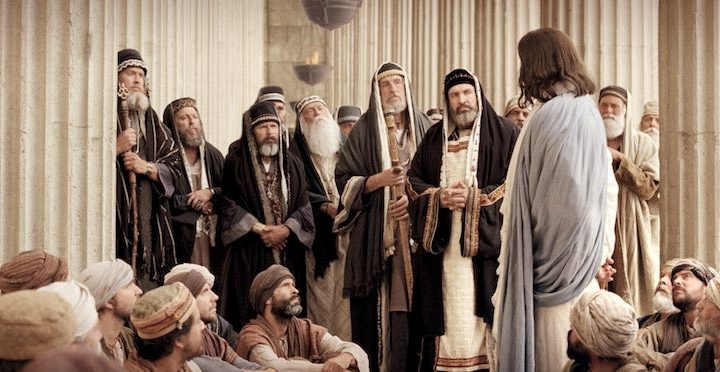

Hi Daniel,
Pesach Sameach! I pray you and yours are healthy and well, covered by His protecting care right now.
I know this is an old post, but I hope you could explain something. You said, “ Since resurrection and the afterlife are never mentioned in the Torah, the Sadducees believed that there was no resurrection, whereas, the Pharisees believed in the resurrection.” Was their justification for denying the resurrection based solely on the fact that it wasn’t directly spoken of in the Torah? Because I can’t make sense of how they could refute the rest of the Tanakh where the resurrection is mentioned (Psalms 71:20, Daniel 12:2, Isaiah 26:19, etc).
Thanks for all your hard work! Always blessed by it.
In general, the Jewish people view the Torah, the first five books of the Bible, as their main source of instruction. So whether they are Pharisees or Sadducees, they both hold strongly to the Torah. The other books are considered to be more complimentary to the Torah. You have rightly included three Scriptures which speak of resurrection or the afterlife in some way. We could quote others as well, like Job 19:25-26, however, it must be admitted that overall the Hebrew Scriptures (the Old Testament) do not provide a great deal of teaching on the subject of the resurrection. Daniel 12:2 is probably the most clear Scripture speaking of the resurrection but it is not heavily studied or understood in most Jewish circles. The Sadducees were purists for the Torah, and there is no resurrection spoken of there. I hope that helps.
Yes, you explained that very well. Makes a lot of sense. Thank you so much!
Well done Daniel
Thank you again Daniel for this wonderful explanation of the Scriptures. I really enjoy reading them, and try to remember them as well. This is a bit hard for such an ‘old’ lady as me. I received pictures of a house for sale in Washington street, Jerusalem which I tried to send toyou. You probably have all the information at your fingertips. I do hope you have been able to find somewhere to move to. Our prayers have been and will continue to be with you for this to happen quickly.
Take care and God bless you
Rose and Geoff
Dear Rose and Geoff,
Thank you for the feedback and your prayers.
God bless,
Daniel